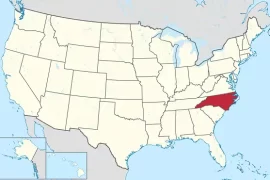Rakhine State in western Myanmar is experiencing one of its most severe crises in recent history, shaped by escalating armed conflict, a deepening humanitarian emergency, and mounting threats to civilian safety and survival. The situation is fluid, with control of territory, access to aid, and the fate of hundreds of thousands of civilians hanging in the balance.
Escalating Conflict and Shifting Control
Since November 2023, the Arakan Army (AA), an ethnic armed group, has launched a major offensive against Myanmar’s military junta, rapidly expanding its control across Rakhine State. As of early 2025, the AA claims to have seized 14 out of 17 townships in Rakhine, as well as Paletwa Township in neighboring Chin State. The junta, however, still holds key areas, including Sittwe, the state capital and a vital port city, enabling it to block most aid deliveries into the region.

The fighting has not remained confined to Rakhine. In recent months, the conflict has spilled into neighboring Ayeyarwady, Bago, and Magway regions, displacing thousands more and bringing violence to new areas for the first time since the 2021 military coup. Civilians in these regions report intense airstrikes, artillery shelling, and the closure of key roads, forcing mass displacement and raising fears of further escalation.
Humanitarian Crisis and Aid Blockades
The ongoing conflict has triggered a dire humanitarian crisis. Over 380,000 people have been newly displaced in Rakhine and southern Chin State since late 2023, joining Myanmar’s record 3.5 million internally displaced persons (IDPs). Many are living in makeshift shelters or open fields, with limited access to food, clean water, or healthcare.
Rakhine faces the imminent threat of famine. Local food production is projected to meet only 20% of needs by March-April 2025, as farmers abandon fields due to insecurity, shortages of seeds and fertilizers, and ongoing displacement. With trade nearly at a standstill and inflation soaring, an estimated two million people are at risk of starvation.
The humanitarian response is severely hampered by military-imposed blockades. The junta’s control of Sittwe port and key transport routes allows it to restrict the entry of both domestic and international aid, a tactic described as collective punishment against the civilian population. Aid organizations report hundreds of incidents impeding the delivery of life-saving supplies, from roadblocks and checkpoints to telecommunications blackouts and denial of travel permits.
Despite these obstacles, humanitarian partners managed to reach 4.2 million people across Myanmar in 2024, but needs continue to outstrip available resources. The 2025 Humanitarian Needs and Response Plan aims to assist 5.5 million people, but as of February, it was only 4.6% funded.
Civilians at Risk: Violence, Displacement, and Rights Abuses
Civilians in Rakhine are caught in the crossfire between the AA and junta forces, facing indiscriminate airstrikes, shelling, and the constant threat of landmines and unexploded ordnance. Reports of extrajudicial killings, torture, and attacks on homes, schools, hospitals, and religious sites are widespread7. The junta has also been accused of recruiting Rohingya men and boys into its ranks, further inflaming tensions between Rakhine’s Buddhist and Rohingya Muslim communities.
The Rohingya, already subject to systematic abuses amounting to crimes against humanity, are particularly vulnerable. About 630,000 remain in Rakhine, with 150,000 held in open-air detention camps. Since hostilities resumed in late 2023, Rohingya communities have been targeted by both sides: the military has launched indiscriminate attacks, while the AA has reportedly shelled, looted, and burned Rohingya neighborhoods during its advances. Tens of thousands have fled across the border into Bangladesh, though many have been pushed back by border guards.
International Response and the Humanitarian Corridor Debate
The worsening crisis has prompted calls for a humanitarian corridor to deliver aid into Rakhine, particularly from Bangladesh, which hosts nearly a million Rohingya refugees. However, as of early May 2025, no agreement has been reached on establishing such a corridor, and discussions remain politically sensitive. Bangladesh has reiterated that it will not be drawn into a proxy war with Myanmar, emphasizing the need for a peaceful and coordinated humanitarian response.
Outlook
Rakhine’s situation remains precarious. With armed conflict spreading, aid blockades intensifying, and food insecurity reaching catastrophic levels, the civilian population faces unprecedented risks. Without urgent international action to secure humanitarian access and protect civilians, the crisis in Rakhine is likely to deepen further in the coming months.







